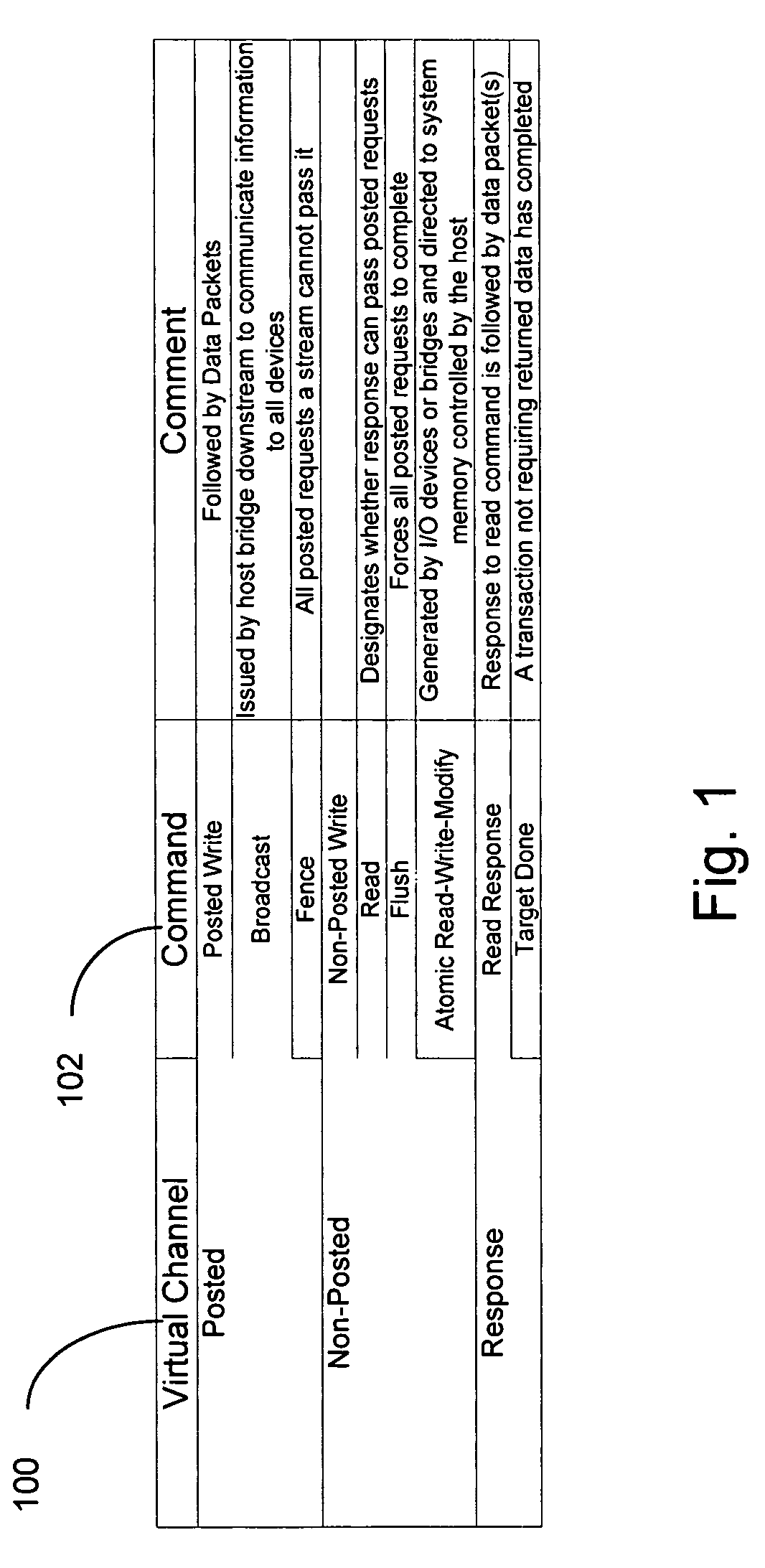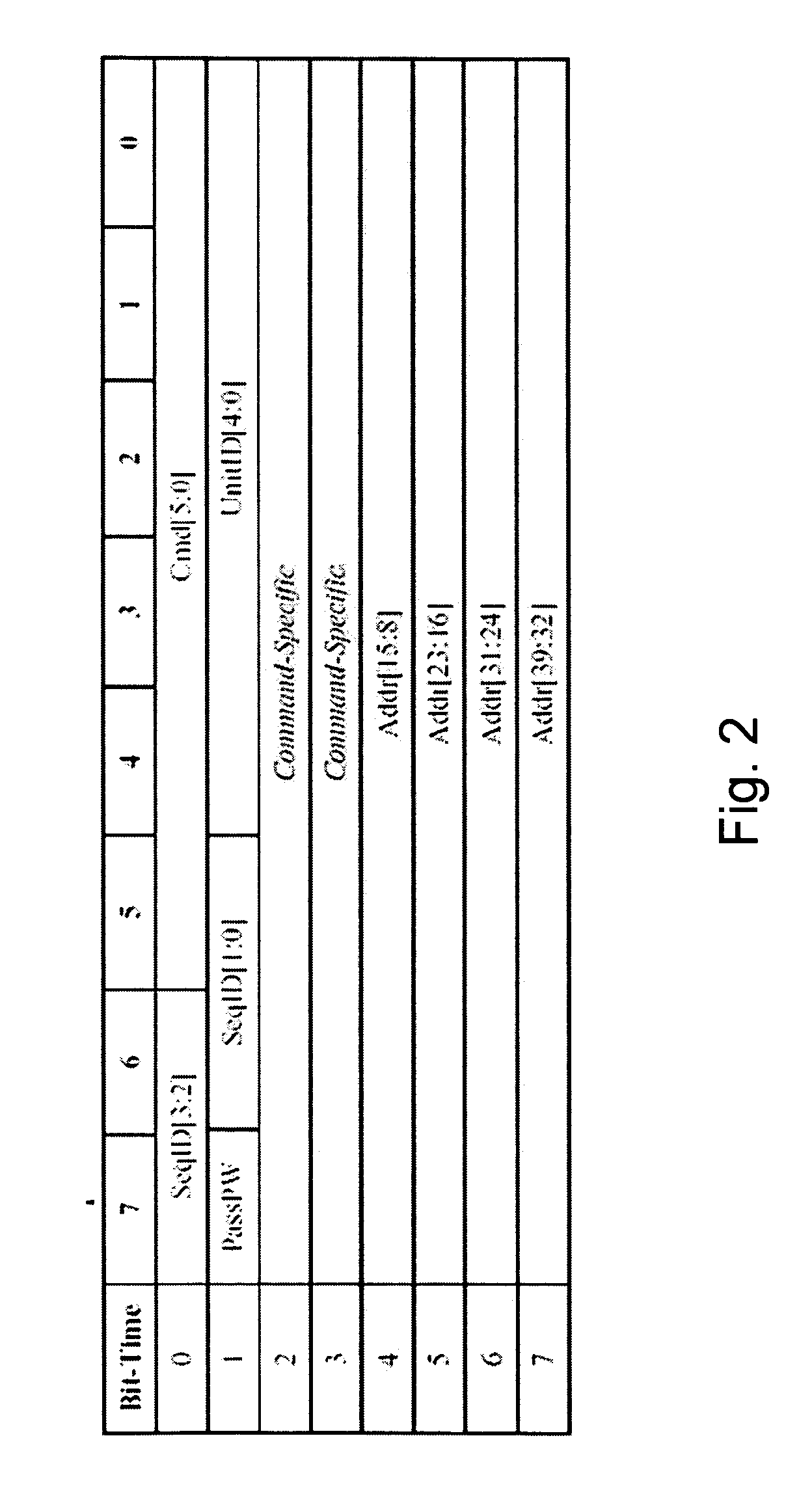Coherent shared memory processing system
a shared memory and processing system technology, applied in the field of high-speed wired data communication, can solve the problems of increasing system complexity, i/o process (the input and output), dragging on the ability of system designers to exploit these advances in processor performance,
- Summary
- Abstract
- Description
- Claims
- Application Information
AI Technical Summary
Benefits of technology
Problems solved by technology
Method used
Image
Examples
second embodiment
[0088]an implementation of the new coherency commands within the existing format is that all packets, including cFills, have the request packet format. Addr[4:2] encodes the command. RdSh and RdEx travel in the NPC channel, but are treated specially as follows: The SrcTag field is ignored. Unlike usual NPC reads, the tag is not remembered or renamed by intermediate devices. It must be forwarded unaltered with the packet, since it is needed at the destination. This makes the reads looks like posted commands. Routing of the cFill is achieved by the sender of the data translating the requestor's NodeID (part of the request packet) into an address which goes into the command packet of the cFill. All packets have the same format and tag routing of cFills as required in the first approach is eliminated. The NodeID is already needed in the packet for recording into the RLD, so this solution doesn't add any additional requirements.
[0089]Non 32 B data sizes are supported as in the previous e...
third embodiment
[0090]A third embodiment could have two additional commands, one to indicate commands with address field and one without. For the ones with address field, use Address [4:2] which correspond to [4:2] in bit time 3. For the ones without an address field, use some other unused bits in the packet. The advantage of this approach is that it doesn't use reserved bits, if that is important (see Note at the end of the section). It also increases the total number of commands available because of the extra command (but only responses, really). This embodiment allows for 8 request format and 2N response commands if the filed Addr[4:2] is used for requests and N bits for responses. It also uses two command encodings from the HT specification and has no ability to supply count for response (non-address) packets.
[0091]As previously discussed, it is critical to the optimal performance of the link that the flow of packets through each of the virtual channels be controlled. Packets should only be tra...
PUM
 Login to View More
Login to View More Abstract
Description
Claims
Application Information
 Login to View More
Login to View More - R&D
- Intellectual Property
- Life Sciences
- Materials
- Tech Scout
- Unparalleled Data Quality
- Higher Quality Content
- 60% Fewer Hallucinations
Browse by: Latest US Patents, China's latest patents, Technical Efficacy Thesaurus, Application Domain, Technology Topic, Popular Technical Reports.
© 2025 PatSnap. All rights reserved.Legal|Privacy policy|Modern Slavery Act Transparency Statement|Sitemap|About US| Contact US: help@patsnap.com



